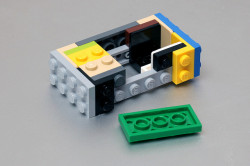We all want our HR systems to play nicely with one another. It’s easier. It’s faster. It means less time wasted manually transferring our data.
The reality is that complete, perfect integration between every system is difficult for HR to achieve – especially if you’re stuck with a number of legacy, on-premise solutions.
However, with 24% of HR teams wanting more cloud systems, more and more cloud vendors are beefing up their integration tech to meet the growing demand for an integrated HR ecosystem. It’s now entirely possible to have separate systems for recruitment, onboarding, payroll and org charting with full integration between each of them.
Here’s 3 ways to integrate your HR systems.

Image source: Flickr Craig Chew-Moulding
Flat File Integration
Flat files, such as CSV, Excel, Tab Delimited, or XML, are the foundation of the most basic type of system integration.
One system exports a flat file, the next system imports the flat file, and therefore the data is transferred across.
Why would you want to use Flat File Integration?
- Handle large data sets with ease
- They’re compatible with many legacy systems (eg. on-premise)
- They’re easy to create, store and manipulate
The problem with flat files is that they’re generally only formatted for one system integration (eg. System A exports a flat file for System B, then needs to export a separate flat file for System C).
Flat files also need to be verified manually, as the systems themselves won’t generally be able to do this.
Finally, flat files need to be imported into a system in batches. Commonly, this might happen at the end of each day via SFTP, but this does mean that you won’t always have completely up to date data in each system.
In short, flat file integration is great if you’re trying to integrate with an older system (usually your payroll system) and don’t need the data to be 100% up to date.

Image source: Flickr Pascal
APIs and Web Services
APIs (application programming interfaces) are the building blocks used for getting data into and out of systems.
Featured in many good cloud apps, an API allows you to build an integration adapter between two systems without needing any customisation of the system itself.
One system sends its data out through the API into your adapter which pushes the data into the API of the next system.
Why would you want to use APIs?
- Very stable integration
- Configurable – choose what you want to send across
- Keep data fresh by scheduling data to be transferred between systems as it changes
Of course, the downside of the API is that it does require some technical effort to create the adaptor between APIs. Sometimes, the system vendor will be able to assist in this regard, but it will likely mean an added cost.
Alternatively, you can use services like Zapier to find integrations between APIs that will only require a small amount of technical effort.
APIs are very useful for easily integrating multiple systems, but they do still require a bit of technical work to get going.

Image source: Flickr Barbara Müller-Walter
Out-of-the-box Connectors
By far the easiest type of integration for HR is an out-of-the-box , point-to-point connector between two systems.
Built by the software vendors, these connectors are ready to go without any extra effort required by HR.
One system will send its data straight into the next system automatically.
Why would you want to use Out-of-the-Box Connectors?
- No work required by HR or internal IT to set it up
- One common integration for all cloud customers means it’ll likely be updated in the future
The only real problem with out-of-the-box connectors is that vendors aren’t often willing to create this integration between any but the most common systems (due to the amount of technical effort required for the vendor to create the integration).
You’re also unlikely to be able to customise these connectors, which makes the integration a bit more restrictive than one you’ve built in-house.
Out-of-the-box Connectors are very easy to get going, but unfortunately they’re not all that common (yet!).
So which type of integration should you pick? Ultimately, it’s always going to depend on the systems you use.
Have they got out-of-the-box connectors? Great – use them!
If not, what are their APIs like? Have you got the IT resources to get an integration built?
No IT? Can you setup a flat file integration instead?
If your systems don’t have any of these integration options, find better systems! Best-of-breed cloud applications exist to replace the functionality of legacy systems (and even expand on this).

Image source: Flickr Randi Hausken
You might be surprised at the number of systems and integration options that are now out there for you to take advantage of.
